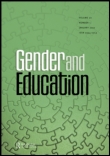 For my PhD research on the Catholic mother-daughter relationship I decided to turn the analytical lens on myself. I discussed the idea with a friend, who suggested examining the mother-daughter relationship. I phoned my mother and asked her what she thought. Her reply was, “Wouldn’t you rather get married instead?” This reply cemented the idea as it said so much about the life trajectory my mother wanted for me.
For my PhD research on the Catholic mother-daughter relationship I decided to turn the analytical lens on myself. I discussed the idea with a friend, who suggested examining the mother-daughter relationship. I phoned my mother and asked her what she thought. Her reply was, “Wouldn’t you rather get married instead?” This reply cemented the idea as it said so much about the life trajectory my mother wanted for me.
This study provided me with a space to discover traces of Catholic women’s stories and histories by re-locating representations of the mother-daughter nexus within the context of my own relationship with my mother. By simply taking an interest in the voice and history of my mother, which I had at times dismissed in the past, I re-discovered my own forgotten female ancestry. I asked my mother about her mother and by-gone days. We talked about photographs and pieces of memorabilia. In our conversations and shared recollections, I excavated a vibrant maternal mythography.
I talked with other women I grew up with and their mothers. This conversational interview process provided these mothers and daughters with a site to remember, to laugh and to talk about their matrilineal pasts. Nuances of similar patterns and shapes surfaced across these mother-daughter groups. A strength, but also limitation of this study is that some stories of the mother-daughter relationship were told but many stories were left unsaid. However, I believe that the women framed themselves, in the interviews and through their own editing of their interview transcripts, as they wanted to be represented. There are dramatic tales such as those of anorexia, cancer, disability and depression, which were not spoken about. Periods of conflict and dissension between mothers and daughters, at times, were eclipsed. Therefore, a partial and contingent understanding of the Catholic mother-daughter nexus is provided in the article. The material realities of life will continue to rebut and challenge these understandings.
One concern I have with the study is that I have taken other women’s voices and I have framed their dialogue in feminist discourse, which they may not understand and may not adhere to. I have written a story for, and about women yet I foresee that the women whose voices are represented in the study will critique the story from many perspectives. I cannot and do not wish to control other women’s readings, and I take responsibility for my reading as I have presented it in this article.
All in all, I do believe that feminist social analysis can open up sites to engage in discussion about the plural and multiple meanings of what it is to women. For some women, this engagement may ease some of the tensions and anxieties attached to womanhood as well as highlight sites of pleasure and contentment. It can also assist women in gaining a political voice, whether in the private or public domain, with which to assert their identity and desires, and to challenge silencing discourses.
As with some of the older women in the research, my mother has since passed away. My father also died recently and so the family home that is described in the article has been sold. The picture of the Sacred Heart of Jesus, which comes under analysis in the article, is now hanging in my brother’s house. It is with sadness yet with delight that I find this article published as it draws on memories of the past that live into the present and future.
Anne Keary (Monash University, Melbourne)
Anne is the author of the article ‘Catholic Daughters: the Mother Daughter Nexus’ which will appear in Gender and Education 23.7

